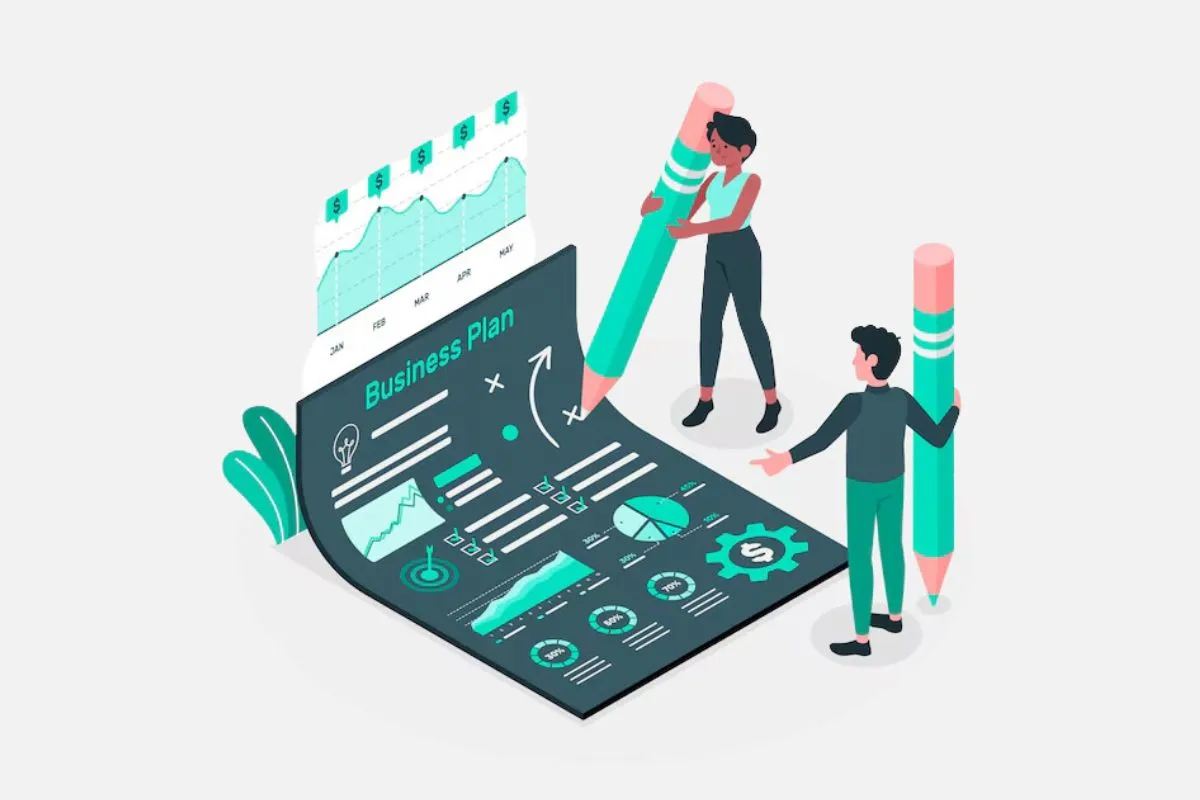An unknown startup secured a $278 million deal from NASA with a single proposal back in 2006 for a MARS vision.
Today, the same unknown startup, SpaceX is worth over $180 billion and has been transforming space exploration since then.
Although, we can’t give the WHOLE credit to the proposal, it did help in establishing the reputation.
Proposals with strategic cover pages drive results 45% better than those without.
Yet, the majority of the people usually skip this first impression.
In this guide, we’ll walk you through battle-tested strategies, templates, examples which have helped businesses achieve their goals through proposals.
Let’s dive in!
Key Elements of an Effective Proposal
Every successful proposal has four strong pillars which sets them apart from 90% of the competitors.
These pillars are equally important for all types of proposals including business, project or research proposals.
1 – Executive Summary
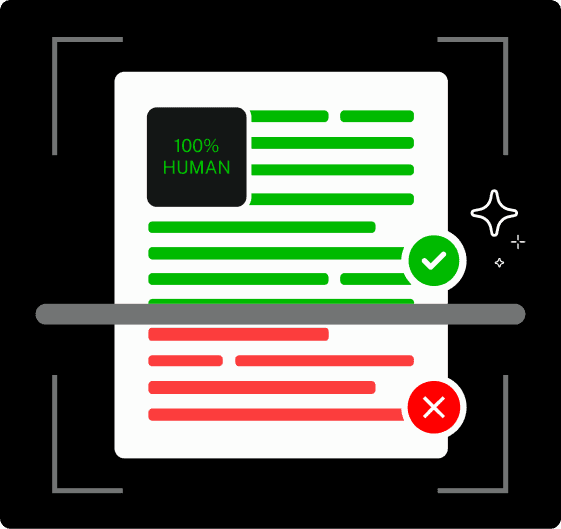
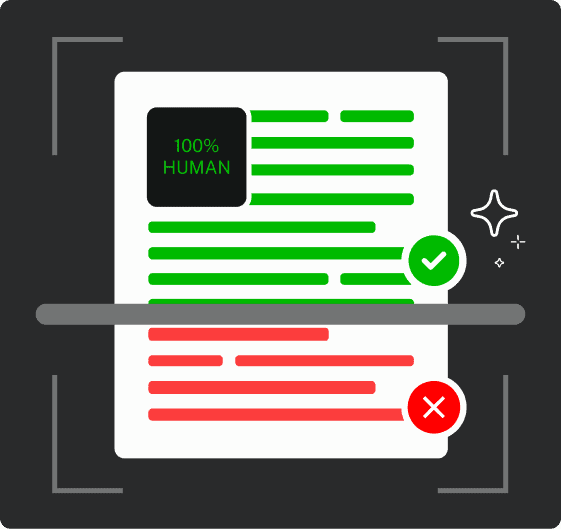
Never Worry About AI Detecting Your Texts Again. Undetectable AI Can Help You:
- Make your AI assisted writing appear human-like.
- Bypass all major AI detection tools with just one click.
- Use AI safely and confidently in school and work.
Decision-makers spend 47 seconds to evaluate the effectiveness of a proposal.
This means, you have these few seconds to land your proposal in ,”consider” pile.
Use these strategies to write different proposal types:
- For Research proposals, focus on the research gap, methodology overview, and potential impact.
- For Example: “This study will fill a critical gap in quantum computing error correction, and advance our understanding of stable qubit systems.”
- For Business proposals, focus on ROI and market impact, and how building a business plan can strengthen your overall pitch.
- For Example: “As a result of this automation solution, operating costs will be reduced by $1.2M per year, and customer satisfaction will be increased by 40%.”
- Project proposals should stress deliverables and timelines.
- For Example: “By Q4, we’ll reduce system downtime from 4% to 0.1%, saving 237 production hours monthly.”
2 – Problem Statement
In this section, you provide a data-driven analysis of the existing condition.
These include specific pain areas, the cost of inaction, and stakeholder effect.
Use Toyota’s “5 Whys” framework approach to identify root causes.
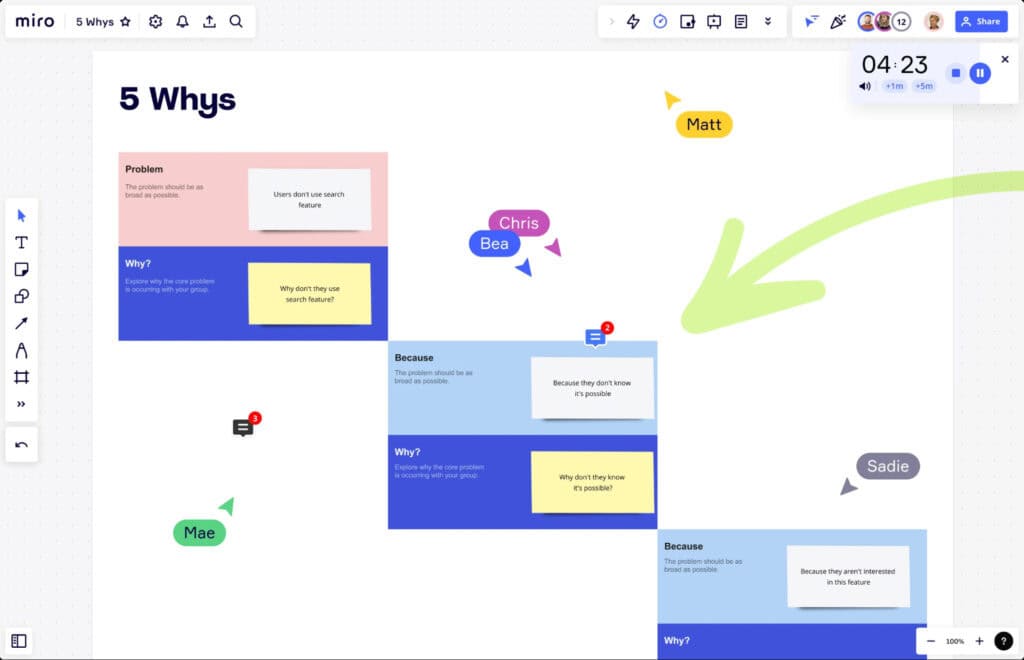
- Research proposals are a bridge between theoretical knowledge and practical application.
- For Example: “Quantum error correction methods available today will not work at scale and are not ready for practical applications.”
- Business proposals show market validation.
- For Example: “67% of customers leave because of slow response times, costing $2.3M annually.”
- Project proposals connect technical difficulties with business impact.
- For Example: “System downtime costs us $50K per day, jeopardizing our 99.9% uptime SLA.”
3 – Methodology
You have the chance to build your credibility in this section.
Include detailed implementation plans, quality control measures, risk management strategies, and clear timelines with milestones.
- Researchers add research design and analysis approaches.
- For Example: “Our mixed-methods approach includes quantitative analysis of 1,000 data points and qualitative insights from 50 expert interviews.”
- Business proposals call for an execution strategy.
- For Example: “Three-phase implementation over 6 months. Pilot tests in Month 2 and full rollout by Month 5.”
- Project proposals define project methodology and control measures.
- For Example: “Agile sprints with bi-weekly deliverables, daily standups, and weekly stakeholder reviews.”
4 – Resource Requirements
This makes your “ask” irrefutable.
Include detailed budget breakdown, team structure, timeline, and resource allocation against specific deliverables.
- Research proposals link each resource to research outcomes.
- For Example: “An investment of $50,000 in advanced imaging equipment will enable the collection of breakthrough data that can’t be achieved with current methods.”
- Business cases compare costs to industry benchmarks.
- For Example: “Implementation cost is 25% below industry average with 2 months faster delivery.”
- Project proposals connect resources to risk reduction.
- For Example: “Three developers, one UX designer, and one project manager reduce development time from 12 months to 7 months, saving $40K in overhead each month.”
The success of a proposal depends on how well these four elements work together to tell your story. Keep it clear, concise, and compelling.
How to Structure a Proposal
A right proposal structure helps convey ideas and achieve the desired objectives.
“But wait, isn’t one proposal structure enough?”
Not quite.
You wouldn’t wear running shoes to a wedding, right? Similarly, different proposals need different structures.
Let’s break down the three major types.
1 – Business Proposals
Best for: executives, clients, stakeholders
This is the “show me the money” structure.
It’s all about cold, hard facts wrapped in a compelling narrative.
Follow this framework:
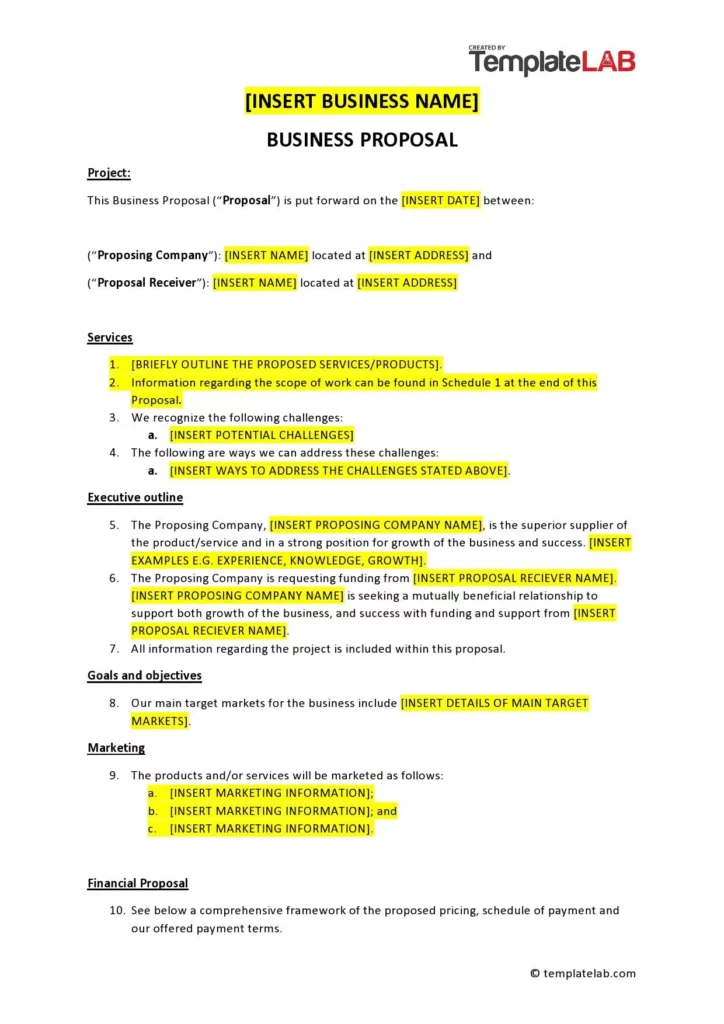
Source: TemplateLab
Your first slide should hit them with a number which will help create a mind interruption. Don’t miss the chance!
2 – Research Proposals
Best for: academic committees, grant providers
You’re fighting for funding here.
Consider yourself a passionate detective, where you’re solving a mystery in your field.
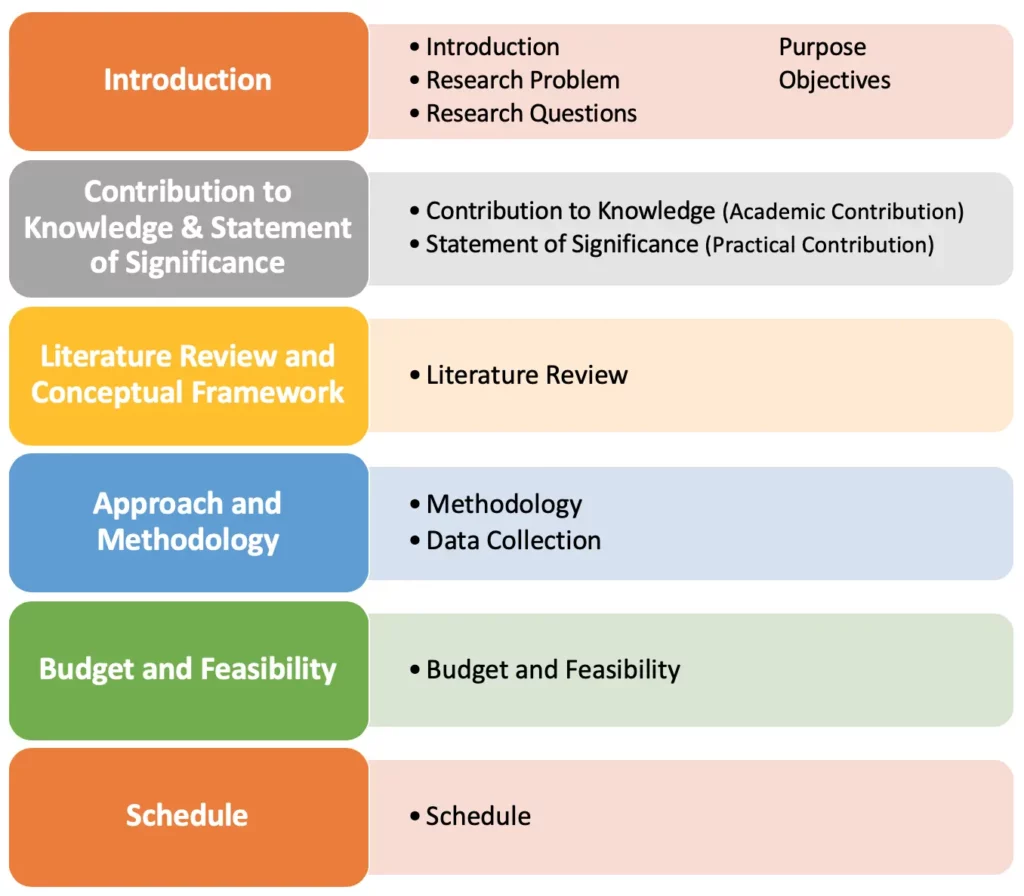
Source: AboutCivil
You can’t miss any of the sections, because missing one would mean collapsing a whole building.
3 – Project Proposals
Best for: internal teams, department heads
Previously, you’re a detective, now you’re an office hero and this is a Hollywood movie.
Start the movie with a big opportunity, then build tension, and then deliver the knockout solution.
Follow this framework:
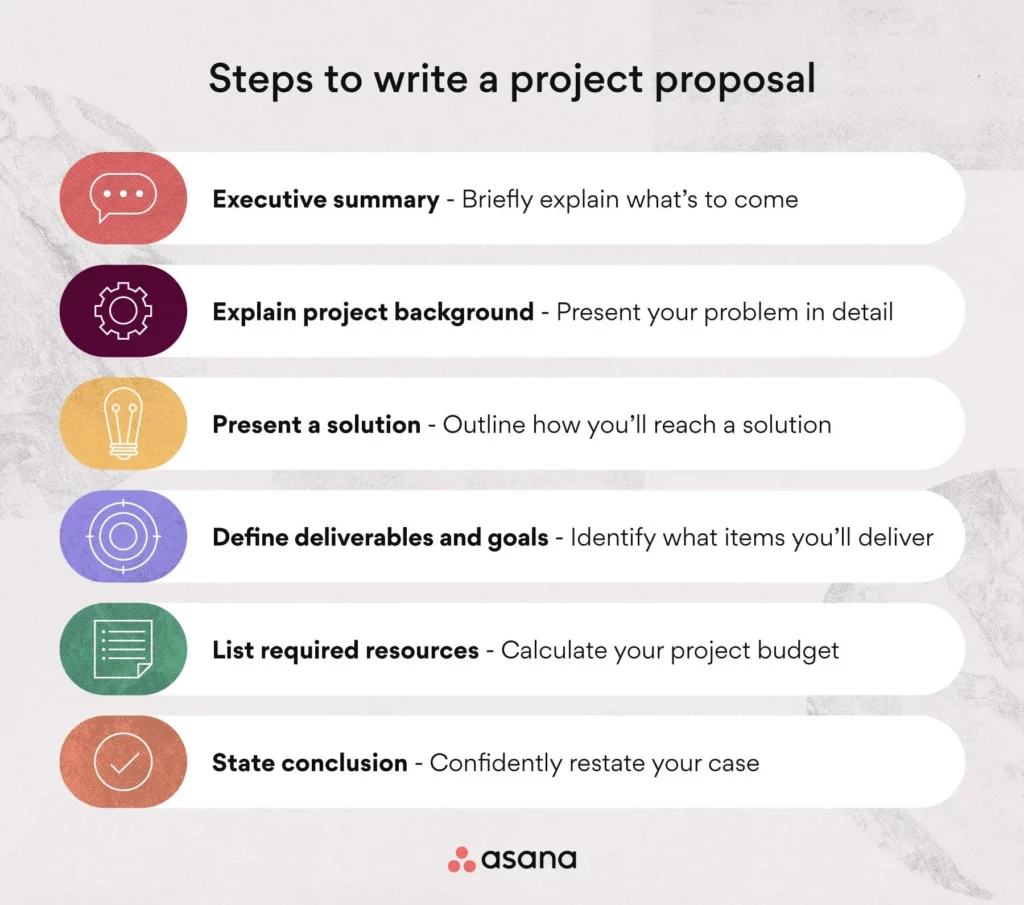
Source: Asana
Remember: Internal proposals need to be just as polished as external ones. (Your colleagues might be tougher critics than clients!)
Standard Proposal Format and Sections
Your proposal’s appearance speaks before your words do.
As Richard Brandson says,
“In the same way that I tend to make up my mind about people within thirty seconds of meeting them, I also make up my mind about whether a business proposal excites me within about thirty seconds of looking at it.”
Let’s walk through how to create a document that commands attention and respect from the first page to the last.
1 – Front Matter That Makes an Impact
Title page is your proposal’s handshake – firm, professional, and memorable.
Essential Elements
- Center your title in bold, larger font (16-18pt)
- Place your organization’s logo at the top
- Include submission date and recipient details
- Add your contact information at the bottom
Use clear hierarchical formatting with main sections in bold and subsections indented.
2 – Create a Professional Layout
Your page layout is like a well-tailored suit – it should fit perfectly and never distract.
The Winning Formula
- Set 1-inch margins for a clean, professional look
- Choose Arial or Times New Roman at 12pt
- Use 1.5 line spacing to ease reading fatigue
- Maintain consistent paragraph spacing (12pt before and after)
3 – Technical Elements
Headers and footers are your proposal’s silent guides. Include:
- Running headers with proposal title
- Page numbers in a consistent location
- Your organization’s name in the footer
- Date of submission (updated with revisions)
Citation Style Guide:
- Academic proposals: APA or Chicago
- Business proposals: Simplified in-text references
- Government proposals: Follow their specific guidelines
How to Write a Proposal Step-by-Step
- Step 1: Identify the Purpose of Your Proposal
First thing first, define and understand what you want to achieve with your proposal.
Answer these questions:
- What problem am I solving?
- What value am I offering?
- Who are my stakeholders?
Create a one-sentence mission statement that will define your purpose and objective.
Examples by Audience:
- Business: “I want to provide ABC Company with an AI-powered customer service solution which will reduce their response times by 60% and save $500,000 annually”
- Research: “I want to investigate the impact of microplastic pollution on marine ecosystems in the Pacific Ocean. My research is focused on coral reef degradation”
- Project: “I want to implement a company-wide digital transformation initiative which will be a first-of-its-type workflow and increase productivity by 35% within 18 months”
Use stakeholder persona tools from LinkedIn to better understand your audience.
- Step 2: Conduct Research and Gather Data
Focus on three key areas in this part:
- Background information
- Current situation analysis
- Future projections.
Our AI Chat can help you organize your research by asking it to “summarize these findings into key themes” or “identify gaps in my research.”
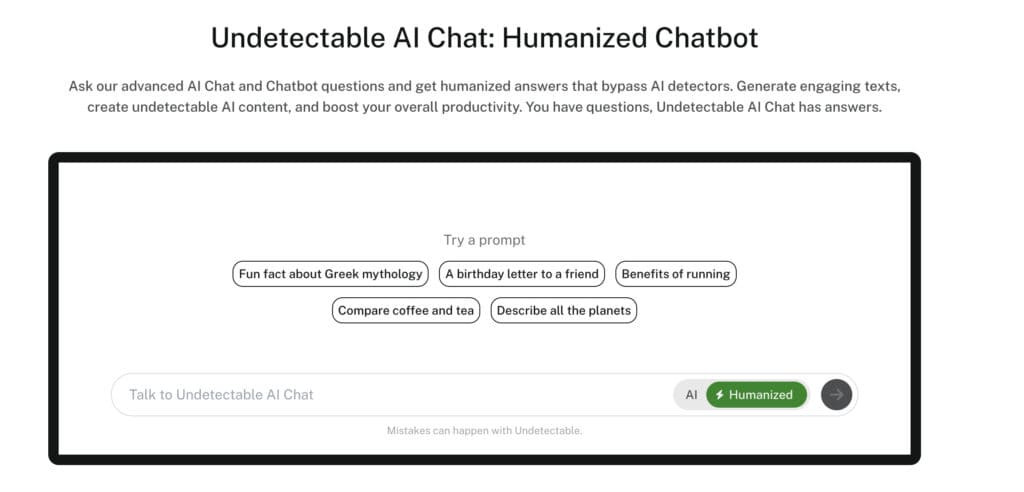
Examples by Audience:
- Business: Market analysis showing competitor pricing, customer surveys revealing pain points, case studies of similar implementations
- Research: Literature review of 50 peer-reviewed papers, preliminary data from pilot studies, gap analysis in current research
- Project: Historical data from similar projects, resource availability assessment, stakeholder interviews and feedback
- Step 3: Write a Compelling Introduction
Advance apologies, but we have to say it one more time.
Write a compelling hook which grabs attention.
Don’t worry, you don’t have to lift heavy weights by yourself when you have AI assistance.
Ask our AI Chat to help you find 10+ types of hooks which are useful in proposal writing.
Once you get the output, select one (or two) which seems compelling to you.
Examples by Audience:
- Business: (Number Hook) “Last year, retail businesses lost $4.7 billion to inefficient inventory management. Our AI-powered solution can help your company reclaim its share of this lost revenue.”
- Research: (Percentage Hook) “Climate change has accelerated coral bleaching by 47% in the past decade. This study proposes a novel approach to measuring and mitigating this damage.”
- Project: (Percentage Hook) “With 67% of our workforce now remote, our current communication systems are creating bottlenecks that cost us 12 productive hours per employee each week.”
You’ll find a variety of different hooks, but the number hook is widely used in proposal writing.
- Step 4: Develop the Main Body of the Proposal
Before presenting your ideas in a logical sequence, create an outline.
It will help you get clarity.
Examples by Audience:
- Business: Solution details → Implementation plan → Cost breakdown → ROI analysis → Risk mitigation
- Research: Literature review → Methodology → Expected outcomes → Timeline → Budget → Research team
- Project: Scope → Deliverables → Timeline → Resource requirements → Risk assessment → Success metrics
Don’t forget to add transition sentences between these paragraphs.
- Step 5: Write a Strong Conclusion and Call to Action
The last part is equally important as the first.
Examples by Audience:
- Business: “Schedule a demo this week to see how we can start saving you $10,000 monthly. Sign the enclosed agreement to begin implementation.”
- Research: “We seek $75,000 in funding to commence this vital research by January 2024. Please review and approve our budget by December 1st.”
- Project: “With your approval of this $150,000 budget, we can begin Phase 1 next month. Please sign off by Friday to maintain our timeline.”
Make it easy for the reader to say “yes” by being specific about what you need from them.
- Step 6: Edit and Format Your Proposal
Review for clarity, consistency, and professionalism.
Once you’re done with your inspection, pass it through AI (like ChatGPT) to help you with the double inspection.
Simply paste your content and ask it to “review this section for clarity” or “suggest improvements for this paragraph.”
Examples by Audience:
- Business: Professional design with company branding, executive summary first, clear pricing tables, client testimonials
- Research: Academic formatting (APA/MLA), detailed methodology sections, comprehensive references, appropriate technical language
- Project: Corporate template, Gantt charts, resource allocation tables, clear milestones and deliverables
How to Write a Research Proposal
- How to Present Your Research Objectives and Hypothesis Clearly
We put forth our objectives as a contract with the reader.
Each objective says: “Here’s exactly what I’m going to discover.” When done right, they:
- Guide your entire research methodology
- Let the reviewers understand your intent
- Allow your research to be measurable
- Provide clarity of expectations
How to showcase your research objectives and hypotheses.
# 1 – SMART Objectives Approach
Make them really work:
Do not write: “To study climate change’s effect on coral reefs”
Instead Say: “To quantify the increase in coral bleaching rates due to a 1°C increase in temperature in the Great Barrier Reef from 2023-2025”
It works because:
- Specific: Gives an exact location and phenomena.
- Measurable: Quantifies temperature change.
- Achievable: One aspect is to be focused on.
- Relevant: A current issue.
- Time-bound: Provides period of study.
# 2 – The Action Verb Approach
Begin with powerful verbs that clearly indicate exactly what your purpose is:
Level 1 (Good):
– Analyze
– Compare
– Evaluate
Level 2 (Better):
– Quantify
– Correlate
– Determine
# 3 – Structure Your Objectives
Primary Objective:
To [action verb] [what] among [whom] using [method] during [timeframe]
Sub-objectives include:
- To [specific goal 1]
- To [specific goal 2]
- To [specific goal 3]
For Example,
❌ Weak Objective: “To study depression in teenagers”
✅ Strong Objective: To measure the prevalence and severity of clinical depression among urban teenagers (15-18 years) in Boston using standardized PHQ-9 assessments during the 20204–2025 academic year”
# 4 – Anatomy of a Strong Hypothesis
Use this formula:
[Independent Variable] will [predict effect] on [Dependent Variable] among [Population] under [Conditions]
For Example
Weak: “Social media affects mental health”
Strong: “Daily social media usage exceeding 3 hours correlates with increased anxiety levels (measured by GAD-7) among college students aged 18-22”
Weak: “Exercise helps diabetes”
Strong: “A 12-week moderate aerobic exercise program (30 minutes, 3 times/week)
will reduce HbA1c levels by 1% in Type 2 diabetes patients aged 40-60″
- Research Proposal Example and Template
Research Objective Templates
For comprehensive objective templates, visit:
Hypothesis Development Tools
Access field-specific hypothesis templates:
Quality Checklists
Find detailed checklists at:
How to Write a Business Proposal
A strong business proposal helps you win clients by showcasing the exact (and accurate) results which they want to see.
When done right, it becomes your most powerful sales tool.
Before writing a single word, you need to understand:
- Client’s industry
- Challenges
- Goals.
For solicited proposals (requested via RFP) = Adhere strictly to guidelines.
For unsolicited proposals = Focus on creating urgency by highlighting unaddressed opportunities.
- What Makes a Strong Business Proposal?
There are five factors which make a business proposal strong. The five factors are:
- Clarity and Conciseness
- Avoid jargon.
- Use bullet points
- Add subheadings for skimmability.
- Customization:
- Address client’s industry and specific needs.
- Use templates but ensure to customize for your needs.
- Visual Appeal:
- Presentation is the art of making complex ideas simple.
- Add charts, graphs, and team photos to make the data appealing & engaging.
- Social Proof:
- It reduces the risk perception in the audience’s minds.
- Include testimonials, awards, or case studies to validate expertise.
- Realistic Timelines:
- It would be better to ask for a long timeline than to delay the project.
- Overpromising leads to distrust.
- Be transparent about project phases.
- How to Write an Effective Executive Summary
The executive summary is the “hook” of your proposal. And as we said, LET THE HOOK CAPTURE ATTENTION in the first few seconds.
Follow these guidelines to make this happen:
- Keep It Short: 1–2 paragraphs or bullet points. Highlight the problem, solution, and benefits.
- Align with the Client’s Goals: Example: “XYZ Marketing proposes a data-driven social media strategy to increase your lead generation by 40% within six months.”
- Emphasize Value: Focus on outcomes (e.g., cost savings, efficiency gains) rather than features.
- Show Credentials: Briefly mention your company’s track record (e.g., “With 10+ years in cybersecurity, we’ve reduced breaches by 60% for clients like ABC Corp.”)
- Business Proposal Example and Template
Proposal Templates
AI Proposal Maker
Step by Step Guide
How to Write a Proposal for a Project
Ever pitched a brilliant project idea only to hear crickets?
It is NOT ONLY about the idea, but how you present it as well.
- Defining the Project Scope, Objectives, and Deliverables
# 1 – Project Scope
The scope is like fencing, defining exactly what’s inside and what’s outside.
In Scope:
- Project boundaries
- Key deliverables
- Target outcomes
- Success criteria
Out of Scope:
- What you won’t do
- Features for later phases
- Non-included elements
❌ Weak Scope: “Build a company website”
✅ Strong Scope: “Design and develop a 10-page responsive website, including home, about, services, portfolio, blog, and contact pages, with e-commerce functionality excluded for Phase 1”
# 2 – Project Objectives
Use the SMART framework to craft compelling objectives:
Format:
To [action verb] [specific outcome] by [timeframe] using [resources] resulting in [measurable result]
Examples:
Weak: “Improve system performance”
Strong: “To reduce application load time by 40% by optimizing database queries and employing caching methods within three months, resulting in an overall improvement in user satisfaction scores”
# 3 – Deliverables
Outline your deliverables as you write a shopping list: precise, countable, and verifiable.
Primary Deliverables:
1. [Major output 1]
– Sub-deliverable A
– Sub-deliverable B
2. [Major output 2]
– Sub-deliverable A
– Sub-deliverable B
- How to Outline Budget, Resources, and Timeline
# 1 – Budget Breakdown
Every cost must have a clear purpose.
| 1. Personnel CostsFull-time staff: $XContractors: $YBenefits: $Z | 2. Direct CostsEquipment: $XSoftware: $YMaterials: $Z | 3. Indirect CostsOverhead: $XContingency (10-15%): $Y |
Pro Tip: Include justification for major items fees.
Item: Enterprise Software License
Cost: $10,000
Justification: Essential for team collaboration, includes:
– Cloud storage
– Team communication
– Project tracking
ROI: 20% time savings in team coordination
# 2 – Resource Planning
Identify all the resources, and plan them accordingly. Common resources include:
- Human Resources
- Technical Resources
- Material Resources
# 3 – Timeline Development
Plan your timeline phase-by-phase to avoid any last-minute confusion.
For example,
Phase 1: Initiation
- Project kickoff
- Gather requirements
- Interview with stakeholders
Phase 2: Planning
- Specify the design
- Allocate the resources
- Assess the risk
Phase 3: Execution
- Testing
- Reviews
- Development
- Project Proposal Example and Template
Find comprehensive project proposal templates at:
Access industry-specific examples:
- IT Project Proposals
- Marketing Project Templates
Remember: Your project proposal is your project’s first impression. Make it count by being clear, specific, and compelling.
Need more guidance? Visit:
How AI Can Help You Write a Perfect Proposal
AI is helping an uneducated local bakery score a $50K catering contract, or a tech startup to beckon in Series A funding. Now you can make a profit out of it- now that you know how.
# 1 – Theme Identification & Analysis
Remember that “connect the dots” game we used to play as a kid? AI does this with your client’s needs – but at superhuman speed.
Here’s how:
- Feed AI your client emails, meeting notes, and industry research
- It’ll spot patterns you missed
- Use these insights to write personalized proposals
#2 – Narrative Development
It’s 2025 now: proposal writing without AI is like trying to fit jigsaw pieces into place without the help of a picture on the box.
AI will also help write your narrative:
- Maps logical section flows based on successful proposal patterns
- Suggests transitions that keep the reader deeply engaged
- Highlights where your unique expertise really needs to shine
#3 – Content Synthesis
Not mere summary or anything materialistic, but AI acts more like an idea-shaped assistance who:
- Digest hours of client meetings into actionable insights
- Highlight contradictions before they become embarrassing proposal mistakes
- Creates executive summaries that are actually read
#4 – Strategic Integration
It involves combining the efficiency of AI with the human touch:
- Use AI for calculation of data and organizing it.
- Bring your industry insights into play, you shed light on potential creative solutions.
- Develop personal connections that make clients say “yes.”
- Allow for those “A-ha moments” to take center stage that only human experience can.
Check out our AI Humanizer right in the widget below!
Conclusion
Your next proposal could be the one that changes everything.
The one that makes decision-makers sit up and say, “This. This is exactly what we need.”
Your groundbreaking proposal is sitting right there, in your mind, waiting to be written.
You’ve got AI in your corner, templates at your fingertips, and a fire in your belly.
The only question is: What are you waiting for?
While others are still formatting bullet points, you could be formatting your acceptance speech.
Ten years from now, someone will be using your proposal as a case study. Make it legendary.
